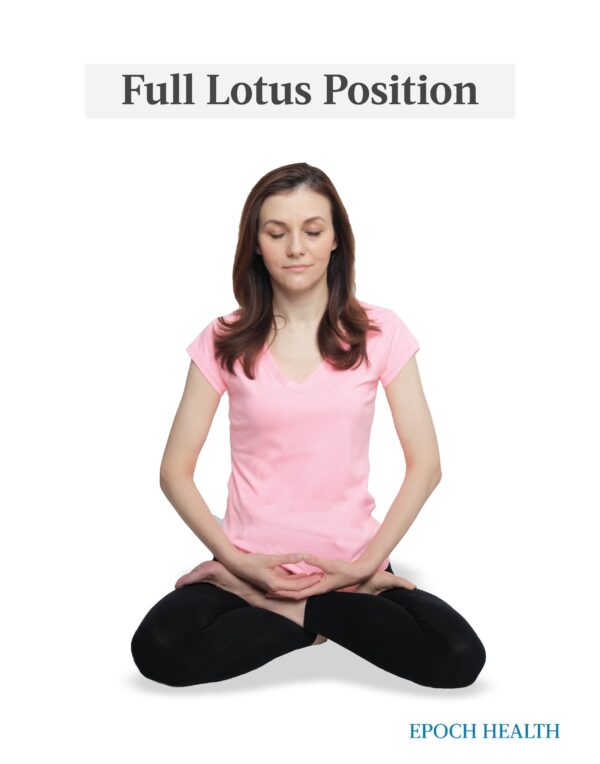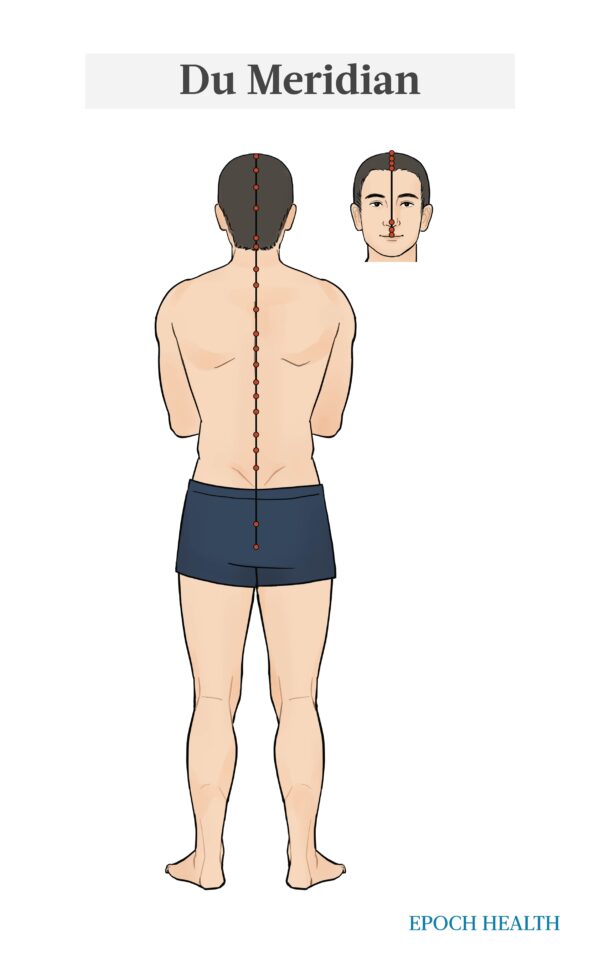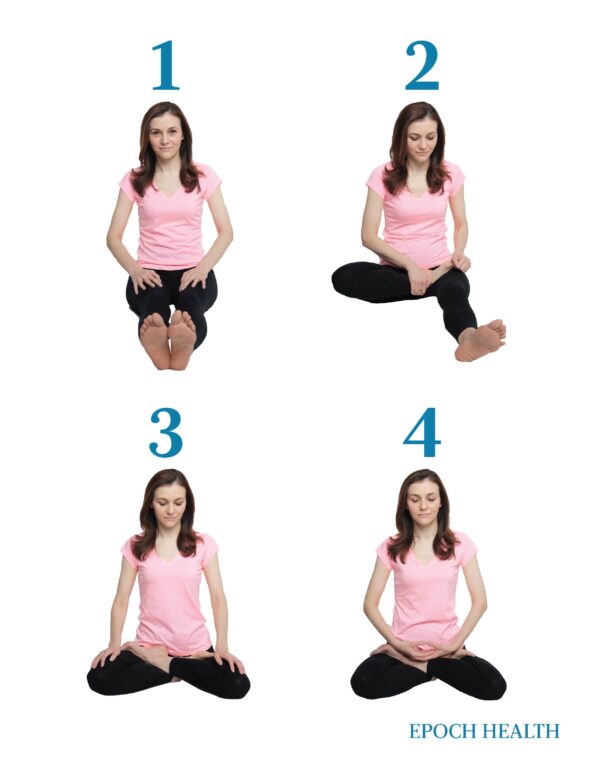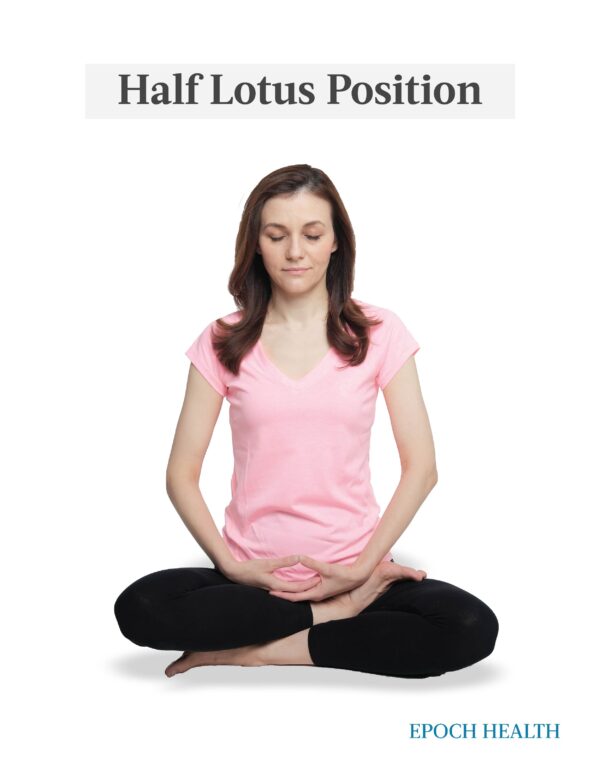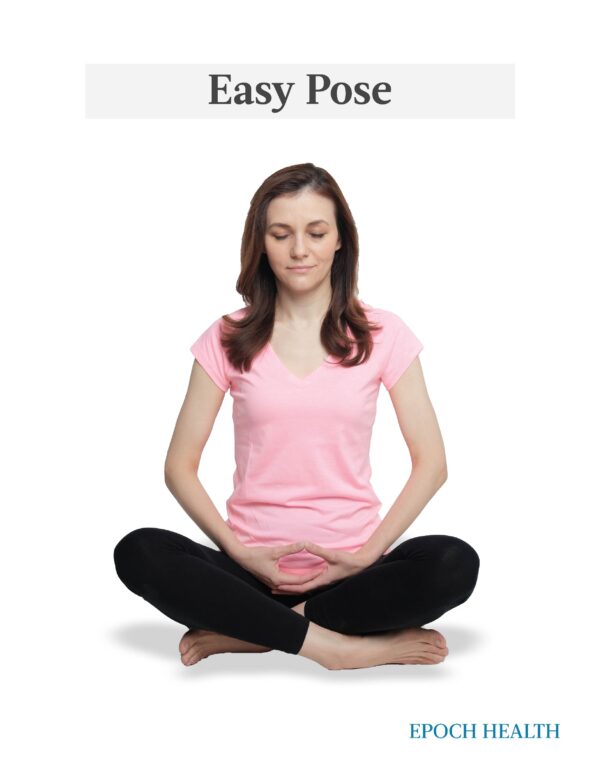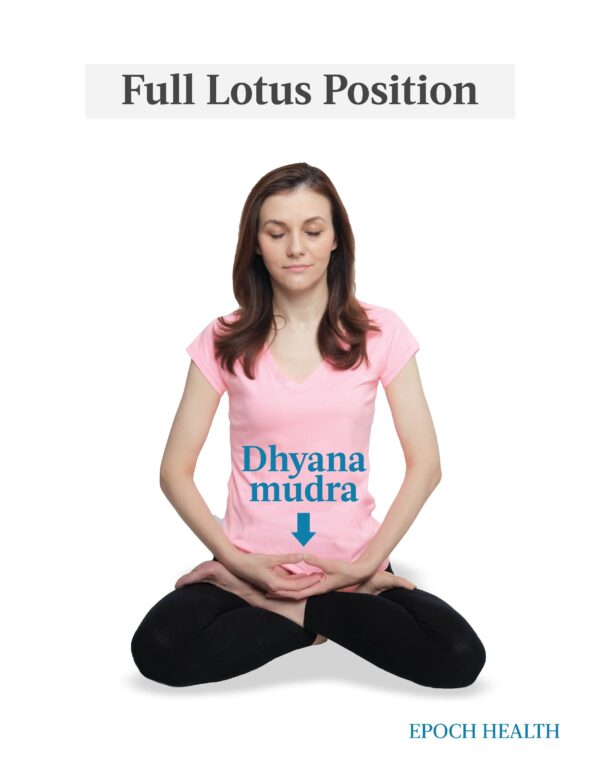

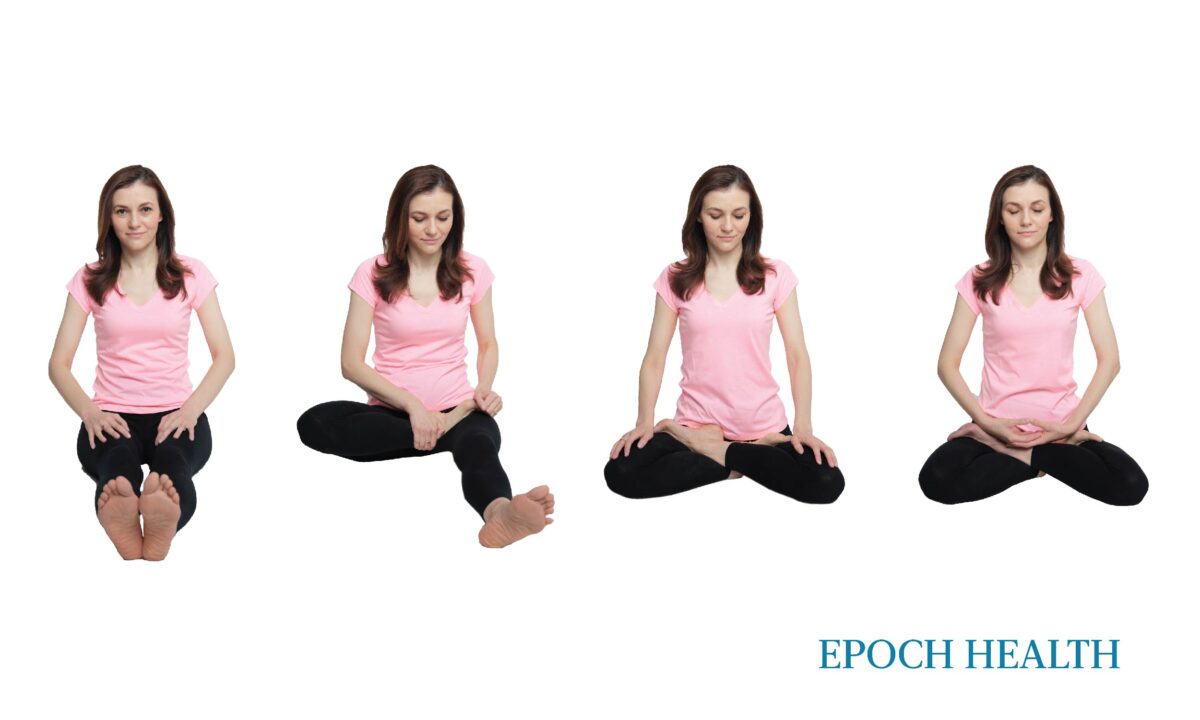
Medical practitioners who teach people how to meditate are often asked this question: “Which is the best meditation position?”
Meditation is a form of mental training to achieve a psychologically clear and emotionally calm state through relaxation, focus, mindful awareness, and sitting exercises. In ancient Eastern countries such as China and India, it was also called “sitting (crossed-legged) in meditation.” It can be part of a more complex practice such as qigong and yoga. Its purpose is not merely relaxation but the cultivation of mind and body.
You can meditate almost anywhere: on the floor, sofa, bed, meditation bench, or chair. However, it is recommended that if you meditate on the floor, you should also use a yoga mat or blanket, especially if the floor is cold.
If you meditate on a sofa or bed, ensure the furniture’s surface is not too soft; otherwise, you may “sink” into the sofa/bed during meditation.
Some people also use a meditation cushion, towel, or pillow. Some also recommend covering your legs with a blanket to keep warm.
According to board-certified psychiatric clinical nurse specialist Deborah L. Collins-Perrica, you should also “prepare the space of the room you are in, so you can sit quietly and calmly.”
According to Naiwen Hu, an internationally renowned traditional Chinese medicine (TCM) doctor, different schools of practice have different ways of sitting in meditation and hand gestures.
The full lotus pose, also known as padmasana, is recommended by most of the experts interviewed, including Hu. It is a cross-legged sitting meditation position where each foot is placed on the opposite thigh.
This is commonly acknowledged as the best meditation position and is used by many religions and practices. It offers a balanced and symmetrical posture, increasing the subtle energy levels in all acupuncture meridians.
When sitting in the full lotus position in meditation, “the energy in the Du meridian is in fast circulation,” said Gwo-Bin Wu, director of Xinhetang Chinese Medicine Clinic in Taiwan.
To get into the posture:
- Sit with your legs straight in front of you.
- Bend one knee (for example, the right knee), and put the foot of the same leg on the other thigh (for example, the left thigh).
- Pull the other foot up and place it on the thigh as symmetrically as possible.
- Soles face upward.
According to Hu, some people have concerns over the full lotus position, believing that this pose can compress their blood vessels and impede blood circulation. However, in his opinion, when you meditate in the full lotus position, “your blood stays in the blocked areas, and these areas will accumulate a lot of energy.” When you undo this pose and stand up after completing your meditation, the blood vessels that were previously blocked will immediately open, and the blood flow will return to normal.
He explained since a lot of energy has been accumulated in the blocked areas, the impact of the force in these areas will also be significant, thus improving blood circulation. Better circulation will also boost immunity, as the blood flow transports our immune cells.
However, suppose you have leg or knee injuries, severe disc herniation, degenerative arthritis of the hip or knee joint, or femoral necrosis of the hip joint. In that case, you should consult your physician before accessing the full lotus position.
In addition, for beginners, being patient and entering the full lotus position slowly is recommended.
“Some people say that it hurts when they sit in the full lotus position,” Hu said, especially at the beginning. “But if you don’t try it, you will never experience the joy of meditation.” Collins-Perrica also said, “If you can overpower the discomfort of sitting in meditation after you get up and walk away, everything else in your day feels easy after that. Because it’s hard to do.”
Some people are pretty stiff in their legs, so when they try to cross their legs, their bent knees have difficulty staying close to the floor. “This can be improved with time,” Hu said.
The half lotus position is a simpler variation of the full lotus pose.
The steps to sit in the half lotus position are the same as those for the full lotus position, except that one bent leg is tucked under the other.
When accessing easy pose, or sukhasana, we simply sit with our legs crossed in front of our body.
Easy pose is used by most new meditation learners and many Westerners, as they find the first two poses quite tricky.
For example, clients of Ellen Wang, a certified functional nutritional counselor and neuro-therapist, cannot do the full-lotus position, as “it is too hard for most people.” Some of her clients can loosely cross their legs, while others cannot, and some meditate by sitting in a chair.
Regardless of their meditation positions, according to Wang, all her clients have benefited from meditation and achieved mental health improvement.
There are other variations of the lotus position, including the bound-lotus position and lotus headstand position, which yogis typically use.
According to Meg Frodel, a holistic health counselor, licensed acupuncturist, and certified yoga instructor, for people with some stiffness in their knees or hips who cannot sit in the lotus or half lotus position, she advises them to “sit anywhere in any position,” as long as they feel comfortable and can relax, and “as long as you don’t fall asleep.”
When sitting in meditation, you must sit upright to have a straight spine, back, and neck, said Wu, but still be relaxed.
“Your spine will have a natural S curve, which is similar to that of the tai chi symbol,” he said. The tai chi symbol, also known as the yin-yang, is a circle divided into two halves, including a black half with a white dot in it and a white half with a black dot, with a curved line connecting both halves and forming a continuous circle. If your spine is slightly leaning forward, you will experience back pain after sitting for a long time because the energy will not be able to pass the meridians properly, and there’s also the issue of nerve compression. Even the narrow spaces between your intervertebral discs will become compressed, thus giving you a backache.
Wu also emphasized that when in meditation, you cannot extend your neck forward. Otherwise, the energy will become stuck in the neck area.
“So when you have a straight back and neck, this energy system is kept unimpeded.”
Another reason is that “you don’t want to be constricting any of your organs,” said Dr. Jessica Russo, a clinical psychologist based in Philadelphia. She said that one needs to sit up straight and not slouch “because you want to be doing some deep breathing. You want that oxygen to come in and be able to get to every part of your body.”
Different experts recommend different breathing styles.
For instance, Russo recommends breathing with your belly instead of your chest. When teaching her clients how to meditate, she first observes their breathing styles and patterns.
Although Hu doesn’t think breathing style matters much during meditation, he concurs with Russo that abdominal breathing is the best.
This is because in abdominal breathing, “the movements of the diaphragm can stimulate and massage your internal organs, promote gastrointestinal motility, accelerate metabolism, and make your brain generate alpha brain waves, and increasing the secretion of endorphins, which in turn also helps with thinking and creativity,” Hu said. In addition, abdominal breathing can stimulate the secretion of prostaglandin, which has antioxidant properties and can reduce oxidative free radical damage.
If you’re not doing a specific cultivation or yoga practice, the average person practicing meditation can choose his or her hand positions and gestures.
Certain religions and practices pay particular attention to hand gestures. These various hand gestures are called mudras.
The Dhyana mudra, also called the jieyin position, meaning “seal,” is a commonly used hand gesture in many religions/practices. When using this mudra, you rest one hand on the other, both palms up, and slightly lift both thumbs so they can touch each other’s tip.
The Dhyana mudra is also used in the sitting exercise of Falun Dafa, a spiritual practice rooted in Buddhist tradition and based on the principles of “Truth, Compassion, and Tolerance,” which practices a set of gentle exercises and meditation. Therefore, different meditation exercises may have specific mudras, and meditators should use the ones appropriate to their practices.
In Taoism, there is a frequently used full lotus meditation position with the crown, both palms, and both soles facing toward the sky. It is said that this posture is conducive to the smooth flow of meridians and the stability of the mind. When using this position, both hands are placed on bent knees, palms up. This position is also used in Buddhism and some yoga practices.
According to the experts, many people meditate with their eyes closed for maximum tranquility and peacefulness.
However, sometimes you may be exhausted after a long day of work, so to avoid falling asleep, you can keep your eyes open.
To Russo, meditation can be seen as a lifestyle. She suggests all meditators breathe correctly and have empathy, compassion, and a calm mind during meditation.
“Breathing correctly, empathy, compassion, and having a calm state of mind. These are principles that we need to focus on throughout our day, whatever we’re doing,” she said.
According to Collins-Perrica, meditation should always bring you benefits regardless of the meditation position or hand gesture you use. She said that she had never met anyone who, after learning to meditate correctly, didn’t benefit from meditation.
However, some people may mistake relaxation exercises for meditation. Sometimes, people tell her that meditation didn’t work for them, and then she finds out that “it really wasn’t meditation, to begin with; it was actually relaxation exercises.”

